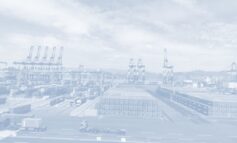Special Issue: The 21st-Century Maritime Silk Road: Challenges and Opportunities for Transport Management and Practice
In 2013, the People’s Republic of China initiated the concept of the “Silk Road Economic Belt and the 21st-Century Maritime Silk Road” (hereinafter referred to as the One Belt and One Road concept: OBOR). This Special Issue focuses on the new ocean-based Maritime Silk Road, which is a strategic framework proposing the creation of a more connected trade and economic zone connecting countries in East Asia, Southeast Asia and Africa. In addition, the China-Africa-South America (CASA) trading routes are actively being promoted by China. The OBOR concept is a massive international plan involving more than 60 countries, representing about one-third of the world economy. The emphasis is on transport connectivity and economic cooperation among the involved countries. The plan is supposed to enhance trade facilitation and logistics development. As such, maritime transport, intermodal transport and seaports will require infrastructure development and facility upgrades with respect to building both capacity and capability. As a consequence, the transport industry is anticipated to witness a new era of growth and changing patterns in the 21st-Century.
The above trade corridors and zones crisscross multiple countries with different transport facilities and environment. It is essential to investigate the respective challenges and opportunities for transport management and practice as the new Maritime Silk Road develops. Policy makers within the Association of Southeast Asian Nations (ASEAN) countries and stakeholders of regional economic blocs such as the ASEAN-Australia-New Zealand Free Trade Agreement (AANZFTA), the Regional Comprehensive Economic Partnership (RCEP), the Trans-Pacific Partnership (TPP) and the Asia-Pacific Economic Cooperation (APEC) are expected to be influenced by the new Maritime Silk Road concept, because they play a key role in the regional and international transport system. In turn, the decisions and actions taken by these policy makers and stakeholders will influence the new Maritime Silk Road. They may significantly facilitate or hinder the development of the new Maritime Silk Road depending on the strategies undertaken. Evolving transport markets and practice complicate the picture, but create a need for research into this phenomenal topic. In sum, the new Maritime Silk Road is expected to exert multi-dimensional impacts on transport management and practice. This thematic special issue aims to gather a collection of review papers in targeted topics which are original and timely.
Topics proposed in a special issue:
- Review of regional and international cooperation in the new Maritime Silk Road
- Review of cross-border transport policies in the new Maritime Silk Road
- The relationship between the new Maritime Silk Road and ASEAN economic integration
- Maritime supply chain research in the OBOR
- Maritime cluster development in the OBOR
- Review of free trade zone policies in the context of the new Maritime Silk Road
- Challenges and opportunities for transport Public-Private Partnerships as the new Maritime Silk Road develops
- The new Maritime Silk Road’s impact on green shipping and port management
- The new Maritime Silk Road’s impact on sustainable development in maritime cities
- The new Maritime Silk Road’s impact on dry port systems
- Review of maritime regulations and policies influencing the new Maritime Silk Road
- Review of intermodal transport management and practice influencing the new Maritime Silk Road
- Review of transport investment policy and practice influencing the new Maritime Silk Road
- Maritime risk and resilience and implications for the OBOR
- Maritime safety and security and implications for the OBOR
- Northern Sea Route in the context of the OBOR
- Transport stakeholder management in the development of the new Maritime Silk Road
- Proactive shipping management in the development of the new Maritime Silk Road
- Review of port devolution and governance models and implications for the OBOR
- Port planning and its coordination with the OBOR
- Transport technology innovation management and practice and their influence on the new Maritime Silk Road
- Other relevant topics relating to challenges and opportunities for transport management and practice
Submission guidelines and associated international conference
This is an open call for papers. In addition, the associated conference is the International Conference on the Silk Road Economic Belt and the 21st-Century Maritime Silk Road for Transportation and Global Supply Chain, which will be held on 1-2 December, 2016.
Best papers will be selected to be considered for publication in the Special Issue.
All submissions are subject to the journal’s standard peer review process. Please refer to the journal’s website for author guidelines: http://www.tandfonline.com/action/journalInformation?show=aimsScope&journalCode=TTRV20#.V3p4k9J97EY
When choosing Manuscript “Article Type” for the submission, click “21st-Century Maritime Silk Road”, otherwise your submission will be handled as a regular manuscript.
Editorial information
- Guest Editor: Jasmine Siu Lee Lam, Associate Professor, School of Civil and Environmental Engineering, Nanyang Technological University, Singapore ([email protected])
- Guest Editor: Kevin Cullinane, Professor, School of Business, Economics and Law, University of Gothenburg, Sweden ([email protected])
- Guest Editor: Paul Tae-Woo Lee, Professor, School of Business IT and Logistics, RMIT University, Australia ([email protected])












